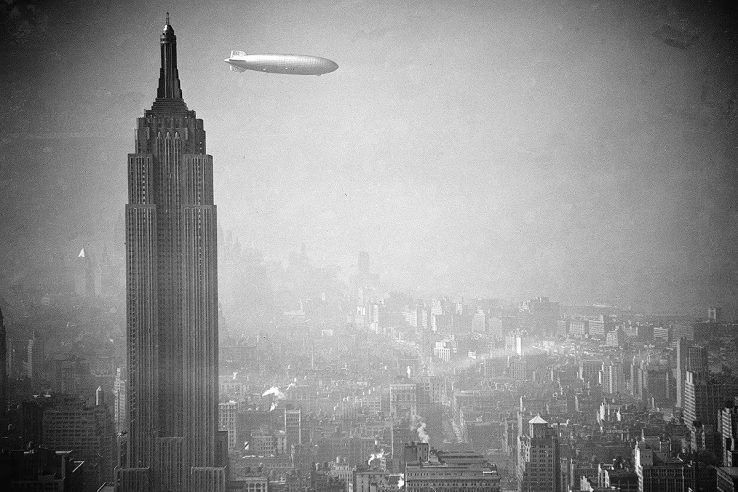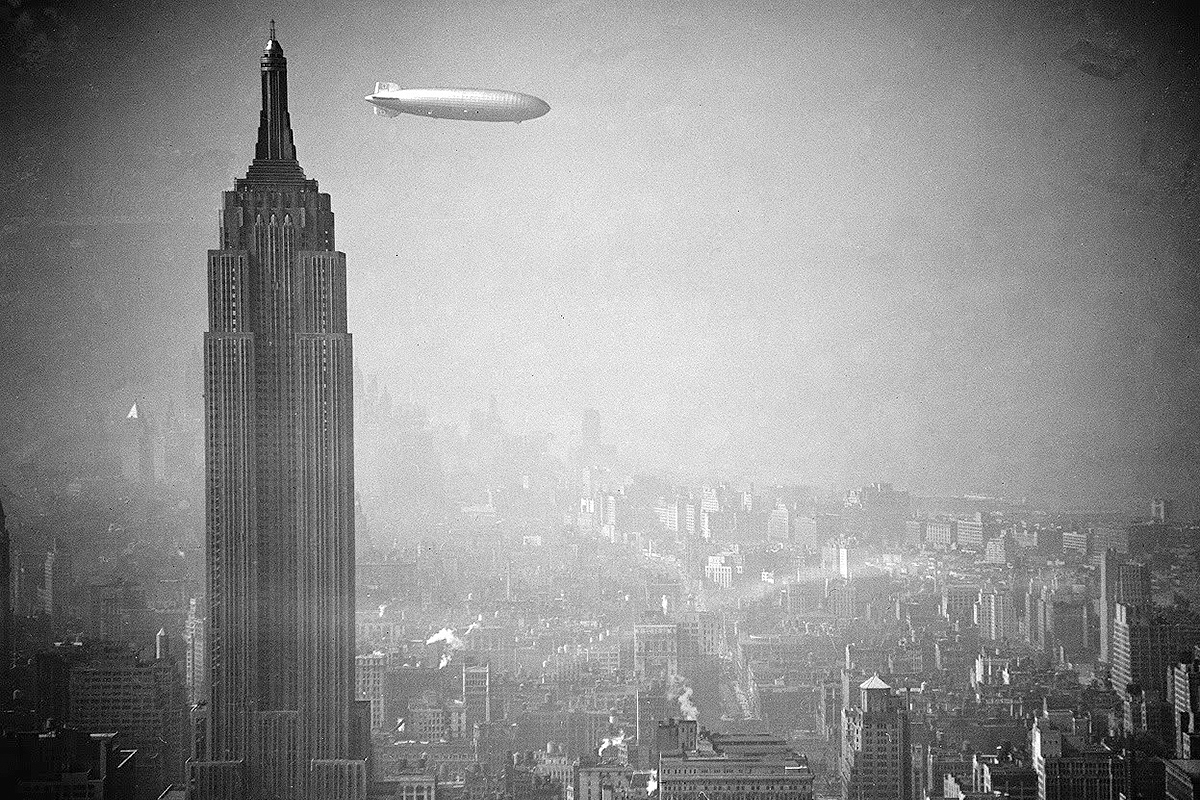
The Gatehouse first came online almost ten years ago, in 2008. A lot has changed in the steam- and dieselpunk scene since then. The former has arguably gone mainstream. The latter is now recognized as a genre and a subculture in its own right. We have seen blogs and webzines come and go. The Gatehouse itself underwent many changes (read our history here). Now it’s time for the next chapter.
With a new name and a new domain, we are upping our game. Continuing in the tradition of The Gatehouse, Never Was will be more of a magazine than a blog, with long-form stories about architecture, history and genre theory as well as the event, book and movie reviews you have come to expect of us.
Mission
The Gatehouse‘s original mission was to serve as a “gateway” to the world of steampunk and dieselpunk online. Hence the name.
Over time, we added two goals:
- To resist the politicization of steampunk.
- To help define the up-and-coming dieselpunk genre.
Those goals have been achieved and, looking back on the last ten years, I think it’s fair to say we played our part.
Politicization of steampunk
It was the publication of SteamPunk Magazine that made clear some were trying to turn steampunk into something it was not.
In its inaugural edition, the magazine disparaged steampunk as “simply dressed-up, recreationary nostalgia”; a kind of “sepia-toned yesteryear” it said was more appropriate for Disney and suburban grandparents than for a vibrant and viable philosophy or culture.
At The Gatehouse, and its associated Smoking Lounge community, we rather liked dressed-up nostalgia. Suddenly this wasn’t good enough anymore.
The blog was one vehicle for resisting the attempt to put a punk “back” into steampunk where it had never belonged. Another was our own printable magazine, the Gatehouse Gazette.
Our team felt that, given steampunk’s roots in Neo-Victorianism, its appreciation of craftsmanship and chivalry and its obsession with empire, an argument could be made that it was reactionary rather than progressive. Best then not to impose any one ideology on it and welcome people from across the political spectrum.
(It’s worth pointing out here that there was never an intense rivalry between the two magazines. We had profound philosophical disagreements, but SteamPunk Magazine was run by great people and has published some of the best genre commentary you can find.)
Debacles
The first issues of the Gatehouse Gazette were not overtly political. The whole point, after all, was to celebrate steampunk as a genre and a style, not an ideology.
That changed with issue 11 (March 2010), which was dedicated to “Victorientalism”.
In my editorial, I recognized that the original Orientalism had often been patronizing and sometimes bizarre in its depiction of Eastern life and traditions, but I proposed that steampunk could “reject the chains of reality” and harmlessly explore this “imagined world”.
That was naive and it provoked strong reactions. Some argued that steampunk, because it deals with the dynamics of history and its alternatives, could never be apolitical; others that, because power imbalances between East and West persist to this day, there is no way to safely recreate the “Orient” without perpetuating nineteenth-century stereotypes.
In hindsight, those were not unreasonable arguments and they are the reason I have changed my mind about Victorientalism. But unfortunately they weren’t always made in a reasonable tone, which put me and my team on the defensive. Worse, our views were mischaracterized. We were accused of “inventing” Victorientalism, which I later explained was a mistake, but by then the damage had been done.
This could have been a moment for introspection; for steampunk to come to terms with a problematic past. That didn’t happen. We missed an opportunity.
The debate also revealed a frustration that steampunk was often limited to nineteenth-century Britain. In other words: disappointment with what steampunk was and a desire to turn it into something else. This didn’t happen either. Steampunk remains Neo-Victorian and that is something I don’t regret.
The Victorientalism debacle inspired us to put out a political issue of the Gatehouse Gazette and organize an online discussion, dubbed the “Great Steampunk Debate”, in collaboration with other steampunk webzines — Exhibition Hall, SteamPunk Magazine, Steampunk Tales — and various organizations.
This turned into something of a debacle of its own.
Some of the specialist discussions, for example, about steampunk and gender, were enlightening (also read Amanda Stock’s “Battle of the Sexes: How Steampunk Should Be Informed by Feminism”), but the general debate about steampunk ideology was — to put it mildly — unproductive.
The whole episode was dispiriting. It seemed steampunks just couldn’t put aside their political differences and enjoy the passions they did share.
This was also the time of Occupy Wall Street. Those arguing for a more political steampunk were proclaiming the two went “hand in hand”. I thought this was preposterous, but for a while it felt like I was in the minority.
It turned out the majority of steampunks were ignoring these debates altogether. Marcus Rauchfuß pointed out there was scarcely a steampunker among the Occupy crowd. Probably the reason those activists were getting so loud was that they realized something I didn’t: they were losing the argument.
Defining dieselpunk
The focus of The Gatehouse and the Gazette — which remained in regular publication until November 2011 and released a final, special edition in August 2012 — shifted to dieselpunk.
Tome Wilson’s Dieselpunks community had become the center of dieselpunk discussion online. Larry Amyett had started his blog and wrote about the philosophy of dieselpunk for issue 17 (March 2011). In terms of content, I think issue 20 (September 2011) was the best Gazette we published. If you’re looking for an introduction to dieselpunk, you could do worse than download it. It has everything from The Rocketeer to Nazis in Antarctica to an introduction to the Russian dieselpunk scene.
I lacked the time to continue editing the Gazette on a regular basis, but, with the invaluable support of Hilde Heyvaert (who has altogether written more for this site than I have), The Gatehouse kept going, churning out blog posts on a weekly basis.
Other Smoking Lounge regulars who helped out were Ella Kremper, Damon Molinarius, Sigurjón Njálsson and Marcus Rauchfuß.
Notable dieselpunk essays from this period include Larry’s “The Philosophy of Dieselpunk,” Piecraft’s “The History of Dieselpunk” and my own posts about the meaning of decodence and how dystopias influenced the genre.
Dieselpunk has become more than steampunk’s mean little brother. For years, we fought to get dieselpunk its own entry on Wikipedia. Now it’s finally there with extensive references to The Gatehouse and Gatehouse Gazette.
What’s next?
The main reason for switching to Never Was is that I want to grow our audience. My hope is that with a new, catchy name (thanks to Hilde for suggesting it!) and a more professional approach to editing and publication, we can reach more people. Not only existing steam- and dieselpunk enthusiasts, but readers who are broadly interested in alternate history.
We’re going for a glossy-magazine feel. Hence a new layout with big pictures, plenty of whitespace and one that is tablet- and mobile-friendly.
Final note: I will be digitizing the best stories from the Gatehouse Gazette to make them easier to read. Follow the Gatehouse Gazette tag to find the articles that are already online and stay tuned for more!



1 Comment
Add YoursKeen to follow the developments, but not seeing an obvious way to ‘sign up’ or ‘subscribe’